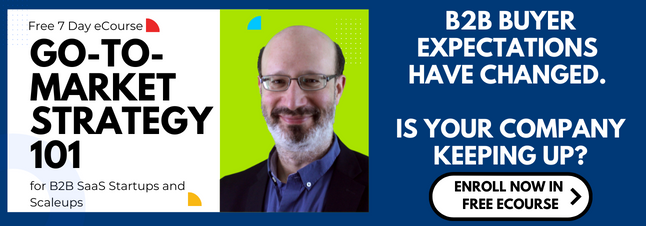If you want your lead generation to power your company’s growth in today’s buyer’s journey, you need well-thought-out conversion paths.
In this blog post, you’ll learn why conversion paths play an essential part in lead generation, how to assemble the critical building blocks of effective conversion paths, and what conversion path best practices look like.
People research and make purchase decisions very differently than they did compared to as recently as a few years ago. The problem?
Many companies, especially those that sell business-to-business (B2B), depend on marketing and sales playbooks that have barely changed over the past 10 or 20 years.
If you’re looking to scale your company’s growth, living in the past can be a huge mistake. Here’s why.
Gartner found that 83% of a typical B2B purchase decision -- researching, comparing options, and evaluating pricing -- happens before a potential buyer engages with a vendor.
McKinsey & Company discovered that 70% to 80% of B2B decision-makers now prefer to make decisions digitally.
In its B2B Thought Leadership Impact Report, LinkedIn, in partnership with Edelman, concluded that “thought leadership remains critical to customer engagement but breaking through the noise is harder than ever.”

So your entire lead generation strategy and how it’s implemented with conversion paths needs to account for all of this self-directed research that’s going on while you and your team are forced to sit on the sidelines.
Just to be clear and level-set:
A conversion path is a collection of digital assets on your website whose entire goal is to turn a website visitor into a lead. Most of the time, the conversion path turns an anonymous website visitor into a known lead.
You’ll need these four building blocks for an effective conversion path:
- Call to action (CTA)
- Form
- Landing page
- Confirmation page
To make sure that your conversion paths are doing everything in their power to support your lead generation goals, keep in mind that your website visitors become much more likely to complete the conversion event when there’s consistency within
- Visual and branding elements
- Copywriting and the offer
Balancing Design, Copywriting, and the Offer
One of the biggest dangers, when a graphic design or even a UX designer takes the lead on the landing page design:
You end up with gorgeous visual and branding elements, but the copywriting and offer get marginalized.
Along the same lines, if your copywriter takes the lead on your conversion path strategy, you’ll likely end up with excellent copy and a compelling offer, but aesthetics and branding take a hit.
Whenever possible, you’ll need to balance these needs so that your conversion paths get the visual and branding right while presenting compelling copywriting and offers.
And finally, when crafting how your conversion paths support your lead gen, always keep your ideal buyer persona in mind -- and what matters most to this semi-fictional representation of your main stakeholder.
In addition, conversion paths for lead gen don’t just need to be personalized for a specific, well-defined buyer persona.
Each conversion path needs to be contextualized for a particular buyer’s journey stage -- awareness, consideration, or decision.

And if you’re serious about Conversion Paths for Lead Generation...
Learn more when you enroll now in our free 7-day eCourse: Go-to-Market Strategy 101 for B2B SaaS Startups and Scaleups.



Submit a comment